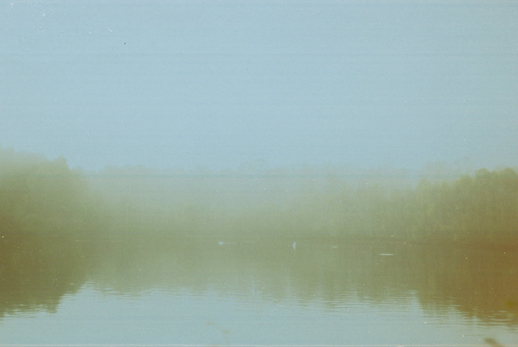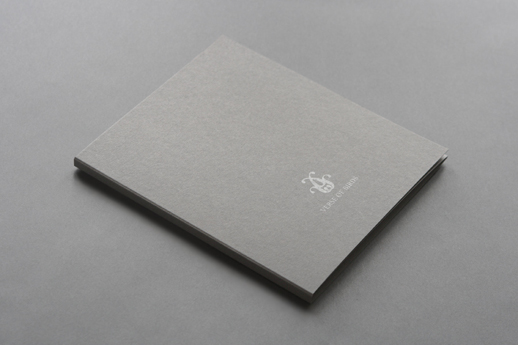By David Hemingway
The British Library recently hosted an evening of events exploring the relationship between the landscape and the writer. The event’s title – “On Location: Writers, Sounds and Places” – reminded me of two of the most moving albums of this year; two albums that draw their moods, their sounds, their ambiences from specific locations.
To forge Below Sea Level’s septet of tracks, Simon Scott explicitly looked to the Fens, the low-lying region of eastern England that is, for the most part, no more than ten metres above sea level. The first disc of Richard Skelton’s Verse of Birds, meanwhile, is a series of musical sketches that distil the coastal landscape of County Clare on the west coast of Ireland (A second disc contains two long, ornithological-inspired pieces; imaginary narratives about skylarks, merlins and kestrels).
Both Scott and Skelton immersed themselves in their respective landscapes. Scott – a former drummer for Slowdive, now a multi-instrumentalist, sound artist and lecturer – grew up in villages on the outskirts of the Fens but drifted towards the capital. After a decade or so living in London, he returned to the open Fenland spaces.
“I moved my family back to the edge of the Fens and began to reintroduce my ears, via headphones and a microphone, to this flat and remote landscape,” explains Scott, “I needed to retrain my ears, to actively engage with the landscape that ontologically unfolded around me. It took two years to capture four seasons.”
Scott made hydrophone recordings of water boatmen at Holme Fen, the lowest place in England. At Wicken Fen near Ely, he placed home-made contact microphones in huge sheets of ice. Scott likens the wind oscillating the wire fence at The One Hundred Foot Drain (a man-made by-pass channel of the Great Ouse) to a taut piano string. At Upwell and Outwell, on the Norfolk border, he recorded the drones of passing agricultural machinery and the clicks ‘n’ pops of water organisms. Bitterns, herons and feeding swans recorded at Welney’s wildfowl centre provided further sound-sources. Scott used these field recordings as the basis for his album, processing these sounds into new forms alongside a smattering of guitar. As if to highlight that Below Sea Level was a collaboration with the natural landscape, Scott played the mixed songs out of portable speakers and re-recorded them in the wide open spaces of the Fens.
Skelton has been acclaimed for the mournful music he has created as a direct response to his local landscape, under a variety of alter-egos including Clouwbeck, A Broken Consort and Carousell. Landings – the second album recorded under his own name – was specifically informed by the moorlands of Anglezarke, Lancashire as well as being elegiac to Louise, his late wife, who died in 2004. Skelton deployed small stones, bark and other ephemera from the landscape as sound-sources and plectra. Elsewhere, I’ve written that the sound of Skelton’s private rituals are a privilege to hear and this remains true in seemingly happier times: the lovingly packaged Verse of Birds appears inspired by a temporary move to Ireland with his new wife, Autumn.
“The west coast has held a particular fascination for me for a long time. I can’t tell you why. I think if you’ve visited the area, you’ll probably understand. It’s just one of those magnetic places. One of the first things my wife, Autumn Richardson, and I found that we had in common was a love for the karst [a distinctive geological formation, shaped by dissolution of soluble bedrock] landscape of the Burren in County Clare, so it seemed natural that we would eventually spend some time there,” explains Skelton.
“The long, low hills of the Burren are particularly compelling,” Skelton enthuses, “The way they catch and reflect the light, and the way they change colour under different weather conditions. The last piece on disc one is a song for Ceapaigh an Bhaile, the hill which rose up out of the sea near our cottage like a great grey whale. I used to regularly walk along its slopes, amidst the almost impenetrable tangle of blackthorn. ‘Promontory” is also a reference to the tongue of limestone which jutted out into Galway Bay. I often found myself watching for hours as the sea engulfed the rocks around it and then retreated with astonishing speed.”
Primarily using acoustic guitar, piano and violin, Skelton fashioned a series of recordings that gracefully reflect his surroundings. Skelton notes that he lived near to but not in the West Pennine Moors that inspired much of his previous work and so, to some extent felt like an outsider, an intruder. In contrast, he says the process of creating Verse of Birds was simply one of trying to reside within the landscape – “For me, to hear a landscape at night and to wake up to it in the morning is important, a vital way to connect with what is real.” Scott similarly describes himself as a participant within his landscape and not separate from it.
Skelton wrote extensively alongside his music making, creating a companion collection of texts entitled “The Flowering Rock” (written with Richardson and published in the book “Field Notes Volume One”). Likewise, Scott produced a journal alongside his sound art and has even written an essay, An Exploration of the Subterranean Fenland Environment.
“An important element was documenting my recording process,” Scott recalls, “So I would photograph each location, make notes of the conditions and equipment used, sketch each place and so on. The accompanying journal is a vital part of this project as it informs the album with visual artwork and site notes, as well as discussing the creative process in depth.” Below Sea Level is about the Fens but it is also about the process of actively engaging with a location.
“The music was everywhere, once I truly listened,” he says.

